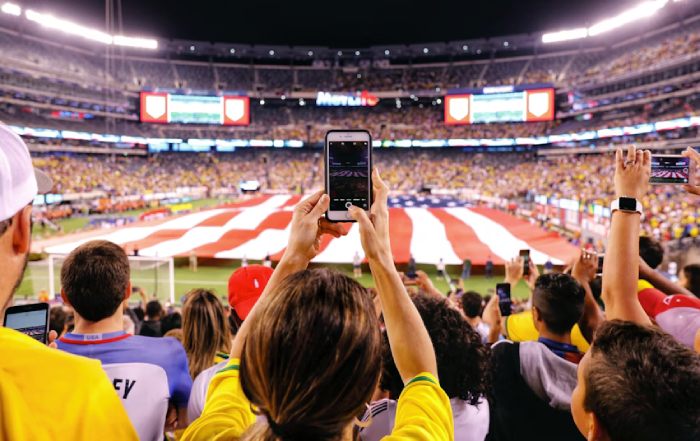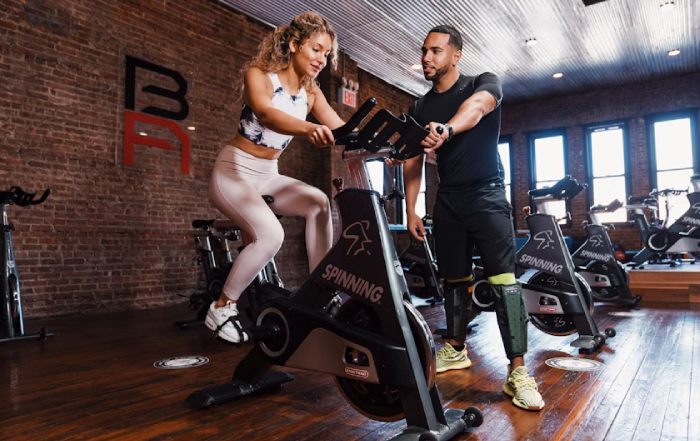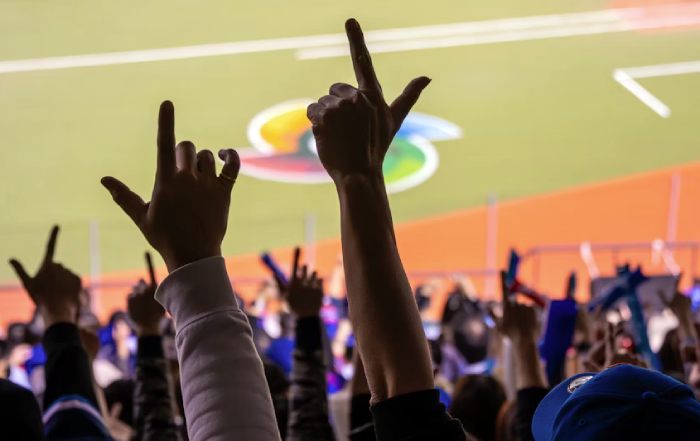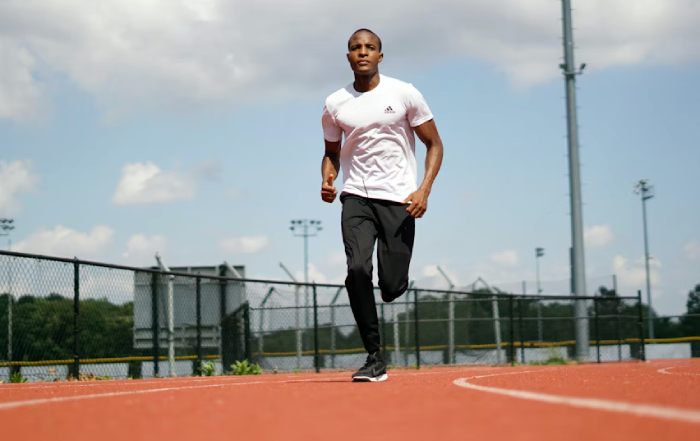Now the boundaries separating eSports and traditional sports are dissolving faster than ever, as once perceived as two distinct universes—one grounded in physical athleticism and the other in digital dexterity—these realms are now merging into a unified entertainment ecosystem that captivates millions across continents. Fans from North America, Europe, and Asia are no longer choosing between watching a football match or tuning into an eSports tournament; they are embracing both, often within the same interactive ecosystem. This transformation is not merely technological but cultural and economic, reshaping how audiences engage with sports, how brands invest, and how athletes—whether digital or physical—build global followings.
As industries evolve, this synergy represents a profound shift in global fan engagement, powered by advances in virtual reality, artificial intelligence, blockchain, and immersive broadcasting. To understand this phenomenon, it is essential to explore how leagues, technology companies, and fans themselves are co-creating a hybrid sports culture that defines the future of competition. For readers of sportsyncr.com, this fusion exemplifies how innovation continues to redefine sports, culture, and entertainment.
The Rise of eSports as a Mainstream Force
What was once viewed as a niche gaming community has matured into a multibillion-dollar global industry. eSports viewership surpassed 650 million worldwide in 2024, according to data from Newzoo, positioning it among the most watched forms of live entertainment globally. Titles such as League of Legends, Valorant, and Counter-Strike 2 now attract audiences comparable to the FIFA World Cup or the Super Bowl, with major tournaments filling arenas in Los Angeles, Seoul, Berlin, and Shanghai.
Platforms like Twitch and YouTube Gaming have played a pivotal role in this expansion, offering real-time interactivity that traditional broadcast sports once lacked. Viewers are not passive spectators—they engage through live chats, vote on game strategies, and even co-create content with influencers. The International Olympic Committee (IOC) has recognized this cultural shift, hosting the Olympic Esports Series and paving the way for gaming-based competitions to coexist with physical disciplines. Learn more about evolving fan engagement models on sportsyncr.com/social.html.
Traditional Sports Embracing Digital Transformation
The shift toward digital interactivity is equally pronounced within traditional sports. Major leagues such as the NBA, Formula 1, and Premier League are investing heavily in eSports divisions and virtual events. The NBA 2K League, for instance, has become a central pillar in the league’s fan engagement strategy, merging the physical and digital versions of basketball into a seamless entertainment experience. Similarly, Formula 1’s Esports Series, supported by Codemasters and EA Sports, allows fans to compete virtually under the same racing conditions as real drivers, turning casual gamers into participants of professional motorsport culture.
This digital evolution extends beyond simulation gaming. Clubs like Manchester City and Paris Saint-Germain have established eSports teams, ensuring that their global fanbases remain connected across multiple platforms. Even fans attending live matches are encouraged to interact through augmented-reality (AR) apps, fantasy leagues, and live predictive games, merging traditional viewing with interactive digital layers. Explore the future of this integration in the sportsyncr.com/technology.html section.
Shared Economies: Sponsorships and Brand Convergence
One of the most fascinating outcomes of this merger is how brands now operate fluidly across both ecosystems. Traditional sports sponsors—such as Coca-Cola, Adidas, and Intel—are embedding themselves in digital tournaments with the same intensity as in physical arenas. In return, native gaming sponsors like Razer, Logitech, and HyperX are crossing into mainstream sports advertising, blurring the lines between gamer culture and athletic performance.
For example, Nike’s partnership with League of Legends Pro League (LPL) in China set a precedent for cross-disciplinary marketing, while Mercedes-Benz’s collaboration with ESL showcased how luxury brands can elevate their visibility in virtual environments. This reflects a broader trend toward integrated marketing strategies where fans—regardless of whether they follow football or eSports—are engaged through shared digital ecosystems and personalized content experiences. To explore brand evolution across sports, visit sportsyncr.com/brands.html.
Technology as the Bridge: The Rise of Immersive Sports Experiences
The technological infrastructure underpinning this merger is advancing at remarkable speed. Virtual reality (VR) and augmented reality (AR) are no longer experimental novelties but essential tools for enhancing fan immersion. Meta’s Quest 3, Sony’s PlayStation VR2, and Apple Vision Pro are redefining how fans consume both live and digital sports content. Viewers can now experience courtside perspectives or participate in 360-degree virtual replays while simultaneously interacting with online communities.
Equally transformative is the role of AI-powered analytics, which allows fans to access personalized insights during games. Through partnerships with companies like IBM Watson, leagues such as the Wimbledon Championships offer real-time performance predictions and highlight compilations generated by AI, creating a data-rich viewing experience that rivals the best eSports dashboards. Learn more about emerging technology trends shaping sports on sportsyncr.com/science.html.
The eSports & Traditional Sports Convergence
Select Category
Market Overview 2025
eSports Growth
eSports viewership rivals FIFA World Cup and Super Bowl audiences globally
Traditional Sports Digital Shift
NBA, Formula 1, Premier League investing heavily in eSports divisions
Global Integration
Fans across North America, Europe, and Asia embracing hybrid entertainment
Interactive visualization of eSports and traditional sports convergence • Data from document analysis
Virtual Arenas and the Evolution of Fan Identity
As eSports and traditional sports integrate, fan identity is evolving from local loyalty to global digital belonging. Traditional clubs once relied on physical attendance and regional pride; now, community engagement thrives within digital platforms such as Discord, Reddit, and X (formerly Twitter). These platforms enable continuous interaction, where fans discuss strategy, share highlights, and engage directly with athletes and creators.
In eSports, community is central to the culture. Fans are often co-producers of the entertainment they consume, contributing through fan art, streaming, or modding. Traditional sports organizations have recognized this participatory dynamic and are adapting it to their operations—launching digital fan tokens, NFT collectibles, and metaverse-based memberships that reward engagement. FC Barcelona’s blockchain-driven fan platform, Socios.com, exemplifies this transition toward a new kind of digital fandom that merges sports, finance, and social interaction. For further insights into this intersection of community and technology, readers can explore sportsyncr.com/culture.html.
eSports Meets Stadiums: Real-World Crossovers
Another visible sign of convergence lies in the physical integration of eSports events into traditional sports venues. Major arenas such as Madison Square Garden, Staples Center, and Wembley Arena regularly host eSports tournaments, demonstrating how these digital spectacles can fill the same seats as championship matches. The Overwatch League Grand Finals, held in traditional stadiums, attract audiences both on-site and online, creating hybrid atmospheres that blend digital fandom with live energy.
Meanwhile, some sports organizations are constructing dual-purpose facilities designed for both physical and digital competitions. The HyperX Esports Arena Las Vegas, for instance, represents the future of multifunctional sports spaces—venues that host live eSports, virtual fan meetups, and even training sessions for real-world athletes utilizing gaming technology for tactical visualization. Fans are not only spectators but participants in a shared environment where athleticism and digital strategy coexist.
Crossover Athletes and the New Definition of Talent
An emerging generation of athletes embodies the fusion between eSports and traditional sports. Many professional players are avid gamers, while some eSports competitors train using physical fitness regimes inspired by athletic disciplines. Formula 1 drivers like Lando Norris and Max Verstappen stream their virtual races on Twitch, merging professional motorsport with gaming culture. Conversely, eSports stars such as Faker from T1 or Bugha from Fortnite fame are achieving celebrity status comparable to elite athletes, complete with sponsorship deals, global fan bases, and media coverage.
This crossover is redefining what it means to be an athlete in 2025. Physical performance and cognitive dexterity are increasingly seen as complementary rather than separate skill sets. As gaming rigs, motion sensors, and training simulators become more advanced, even traditional athletes integrate eSports elements into their training programs to improve reaction times, decision-making, and strategy. Readers can find related discussions on athletic innovation on sportsyncr.com/fitness.html.
Media Convergence and the Future of Broadcasting
The broadcasting industry is another arena witnessing profound integration. Traditional sports broadcasters are now competing with streaming platforms that specialize in interactive content. ESPN, Sky Sports, and DAZN have invested in hybrid coverage models that feature live commentary from both sports professionals and gaming influencers, creating a multi-layered storytelling approach designed for a generation accustomed to second-screen experiences.
Meanwhile, Amazon Prime Video and Netflix have entered the arena with sports-related docuseries that highlight both physical and digital competitions. The Drive to Survive format, which boosted global interest in Formula 1, has inspired eSports-centric productions, emphasizing player psychology, competition pressure, and teamwork—narratives that resonate across both domains. Learn more about evolving sports media trends at sportsyncr.com/news.html.
The Economic Impact of the Unified Sports Ecosystem
The merging of eSports and traditional sports is not only a cultural phenomenon but also a profound economic evolution. By 2025, the combined market value of the global sports and eSports industries has exceeded $700 billion, with digital engagement channels contributing a rapidly growing share. According to projections from PwC and Statista, eSports revenues are expected to reach nearly $3.5 billion this year, while digital extensions of traditional sports—such as fantasy leagues, AR fan experiences, and virtual merchandise—have created entirely new revenue streams.
For leagues and brands alike, this convergence represents a golden era of monetization through hybrid content strategies. The ability to merge live sports with digital interactivity allows for microtransactions, virtual goods, and fan subscriptions that sustain long-term engagement. For instance, Epic Games has redefined digital branding through collaborations between Fortnite and major sports organizations like the NFL and Manchester City, offering fans exclusive in-game skins and crossover events. Similarly, FIFA Ultimate Team—now evolved into EA Sports FC Ultimate Team—has become one of the highest-grossing game modes in history, blending virtual competition with real-world sports fandom.
This digital economy extends to merchandising as well. Sports apparel giants such as Adidas and Puma now integrate digital wearables into metaverse experiences, allowing fans to dress their avatars in branded apparel that mirrors physical collections. The business implications are immense: every jersey or sneaker purchase can now carry both a tangible and virtual component, doubling visibility across ecosystems. To explore how these market trends shape the sports economy, readers can visit sportsyncr.com/business.html.
The Role of Data Analytics and Artificial Intelligence
Data has become the lifeblood of both eSports and traditional sports. The sophisticated use of AI and machine learning has allowed organizations to track player performance, predict outcomes, and personalize fan engagement at unprecedented scale. Platforms such as Hawk-Eye Innovations, Catapult Sports, and Stats Perform provide performance analytics that bridge the gap between digital and physical realms. eSports teams use similar systems to monitor reaction times, decision latency, and micro-movement precision—metrics that mirror those used in football or tennis performance analysis.
Artificial intelligence also drives fan personalization. Through predictive models, AI platforms determine viewer preferences in real-time, customizing camera angles, commentary tones, and recommended highlights. The NBA’s CourtView and Amazon’s X-Ray features exemplify this innovation, giving audiences a data-rich, immersive viewing experience that resembles eSports dashboards.
Moreover, AI-powered avatars and commentators are now emerging as a major innovation. Companies such as IBM Watson Media and DeepBrain AI are creating lifelike virtual hosts who can analyze plays, interview athletes, and respond to fan questions instantly—bringing together the analytical precision of eSports commentary and the charisma of sports broadcasting. These developments are covered in-depth on sportsyncr.com/technology.html.
The Metaverse and the New Frontier of Fan Participation
The convergence of eSports and traditional sports finds its most immersive expression in the metaverse—a connected digital space where fans can experience sports events, socialize, and transact simultaneously. Organizations like Meta, Roblox, and Epic Games are designing persistent environments where spectators can attend live matches, play digital versions of real games, and purchase branded merchandise. The NBA’s partnership with Meta Horizon Worlds allows fans to experience virtual courtside seats, while Formula 1 has experimented with 3D race simulations where fans can view live telemetry in shared metaverse spaces.
This transition marks a fundamental redefinition of what it means to “attend” a game. Instead of being limited by geography or ticket price, fans from Singapore, Canada, or Brazil can all join the same digital arena, interact in real-time, and share collective moments that feel as tangible as live attendance. The metaverse’s role is also deeply commercial: by hosting virtual billboards, sponsor activations, and NFT-based collectibles, sports organizations are building economies that function 24/7. Manchester United, for instance, has launched digital twins of its stadium for global audiences to explore in VR, while Nike’s .SWOOSH initiative empowers fans to co-create virtual apparel for athletes and avatars alike.
The integration of blockchain ensures that ownership of these virtual assets is verifiable and tradable. Fan tokens, powered by platforms like Socios.com and Chiliz, offer new engagement models, enabling supporters to vote on club decisions, unlock exclusive content, and gain access to behind-the-scenes experiences. Learn more about global trends transforming fan engagement at sportsyncr.com/world.html.
Cross-Generational Appeal and Cultural Fusion
Perhaps the most profound effect of this merger is the unification of generations under a single sports culture. For younger audiences raised in the digital era, eSports represents the natural extension of social gaming. For older generations loyal to traditional sports, the infusion of interactive elements—such as digital fantasy leagues or mixed-reality broadcasts—creates a modernized experience without erasing legacy traditions.
This fusion is changing not only how sports are consumed but also how they are perceived as cultural phenomena. Global brands like Red Bull, Samsung, and Intel have mastered the art of blending extreme sports, gaming, and technology, crafting narratives that transcend the limits of any single medium. Their marketing strategies now emphasize “shared adrenaline”—the emotional bridge between a goal scored on a field and a victory achieved in a virtual arena.
Cultural institutions are taking notice too. The Smithsonian Institution and Victoria and Albert Museum have curated exhibitions exploring the cultural significance of eSports, positioning them alongside traditional forms of athletic expression. Universities are offering hybrid sports programs that combine kinesiology, digital media, and performance analytics—training the next generation of athletes and analysts to thrive across both ecosystems. Readers interested in this evolving sports culture can explore more on sportsyncr.com/culture.html.
Environmental Sustainability and the Digital Shift
Sustainability is another key dimension in the merging of sports ecosystems. Traditional sports events are known for their carbon footprints—large stadiums, international travel, and resource-intensive operations. eSports, by contrast, have shown that large-scale fan engagement can occur virtually with far lower environmental impact. As hybrid models become the norm, organizations are increasingly prioritizing sustainability as a shared goal across both domains.
FIFA, UEFA, and IOC have all committed to carbon-neutral event strategies, while eSports tournaments are adopting renewable energy solutions for data centers and broadcast operations. Cloud-based event streaming, remote commentary, and digital ticketing further reduce waste. The rise of virtual fan engagement eliminates the need for constant travel while maintaining global participation.
Brands like Microsoft, Google Cloud, and AWS are playing pivotal roles in this transition, offering green data solutions and carbon reporting for both eSports and live sports organizations. This environmental consciousness resonates with the younger generation of fans who expect their favorite teams and platforms to uphold sustainable values. For an in-depth look at sports and environmental responsibility, readers can explore sportsyncr.com/environment.html.
The Global Expansion of Sports Convergence
This merging of industries is a worldwide movement. In Asia, eSports adoption is driving new hybrid ventures, with countries like South Korea, Japan, and China leading in both player development and technological infrastructure. The Korean e-Sports Association (KeSPA) has become a global model for structured governance and athlete support, while Tencent’s investment in cross-platform gaming continues to influence global sports media.
In Europe, football clubs are expanding into gaming as a method of youth engagement, with Bundesliga, LaLiga, and Serie A each developing digital ecosystems that include official gaming tournaments. Meanwhile, North America remains a hub for innovation, where sports-tech startups in San Francisco, Toronto, and New York are developing immersive AR fan experiences and AI broadcasting tools that redefine audience participation.
Emerging markets in South America and Africa are also entering this landscape, leveraging mobile-first gaming ecosystems to connect sports fans who might not have access to large stadiums. In Brazil, the CBLOL (Campeonato Brasileiro de League of Legends) has become a cultural phenomenon rivaling traditional football fandom, while Kenya and Nigeria are cultivating homegrown gaming startups that integrate local sports themes. This democratization of access is making global sports more inclusive than ever.
The Future of Fan Engagement and Monetization
The years ahead will see the rise of hyper-personalized sports experiences where every fan journey is data-driven and interactive. AI-powered recommendation systems will predict viewer moods, suggesting highlights, merchandise, and fantasy leagues tailored to individual preferences. Virtual reality will bring fans into live locker rooms, allowing them to observe pre-game rituals or experience halftime discussions. Meanwhile, blockchain will ensure authenticity of collectibles and prevent counterfeiting in digital merchandise.
Streaming platforms are evolving into full-fledged fan ecosystems. Twitch, YouTube, and Kick are integrating direct commerce, allowing users to purchase merchandise or team NFTs during live events. Meanwhile, sports franchises are experimenting with subscription tiers that combine real and virtual perks—exclusive training footage, personalized coaching sessions, and early access to new eSports titles or athlete collaborations.
This hybridized model of engagement will become the foundation for a multi-trillion-dollar sports economy by 2030. Fans will no longer distinguish between real and virtual; they will move fluidly between both, guided by seamless technology and emotionally connected storytelling. For updates on the evolution of sports monetization, visit sportsyncr.com/sponsorship.html.
Challenges in Regulation, Integrity, and Player Welfare
As with any rapidly growing industry, the convergence of eSports and traditional sports also introduces new regulatory challenges. Integrity concerns, player mental health, and equitable labor practices must evolve alongside innovation. eSports, for instance, faces ongoing scrutiny regarding match-fixing, doping, and burnout—issues that mirror those long seen in physical sports. Regulatory bodies like the Esports Integrity Commission (ESIC) and World Anti-Doping Agency (WADA) are working collaboratively to establish unified ethical frameworks.
Mental health has also become a major focus area. Professional gamers often face relentless schedules, online harassment, and psychological strain, just as traditional athletes do. Sports psychologists and wellness experts now work across both sectors, creating programs that emphasize balance, resilience, and sustainable performance. Organizations such as Mind.org and Athlete Ally advocate for inclusivity and mental well-being, pushing leagues to develop long-term welfare initiatives. Learn more about athlete wellness initiatives on sportsyncr.com/health.html.
The Path Forward: A Unified Vision of Global Sports
By 2025, it has become clear that the future of sports is not about competition between physical and digital disciplines, but collaboration between them. This fusion has created a continuum of performance, creativity, and fandom that transcends traditional definitions. From the roar of a packed stadium to the synchronized clicks of a global eSports arena, fans are connected by shared emotion, strategy, and identity.
As technology continues to evolve, these experiences will only become more interconnected. Artificial intelligence, virtual environments, and data-driven personalization will ensure that every fan can engage in ways once unimaginable—whether through immersive VR, AI-powered fantasy leagues, or real-time analytics. The new sports world will be defined not by the boundaries of a field or a screen but by the emotional connections that unite fans, players, and creators across the globe.
For ongoing coverage of these transformative developments, visit sportsyncr.com, where innovation, passion, and performance converge to define the next era of global sports culture.









IPC standards ensure 95% of major venues meet inclusive infrastructure requirements for all participants.
74% of fans support teams demonstrating verified social progress through health, education, and empowerment initiatives.
🎯 Common Goal Initiative
Measures impact through player wage donations to social development, connecting athletic performance with measurable societal progress.